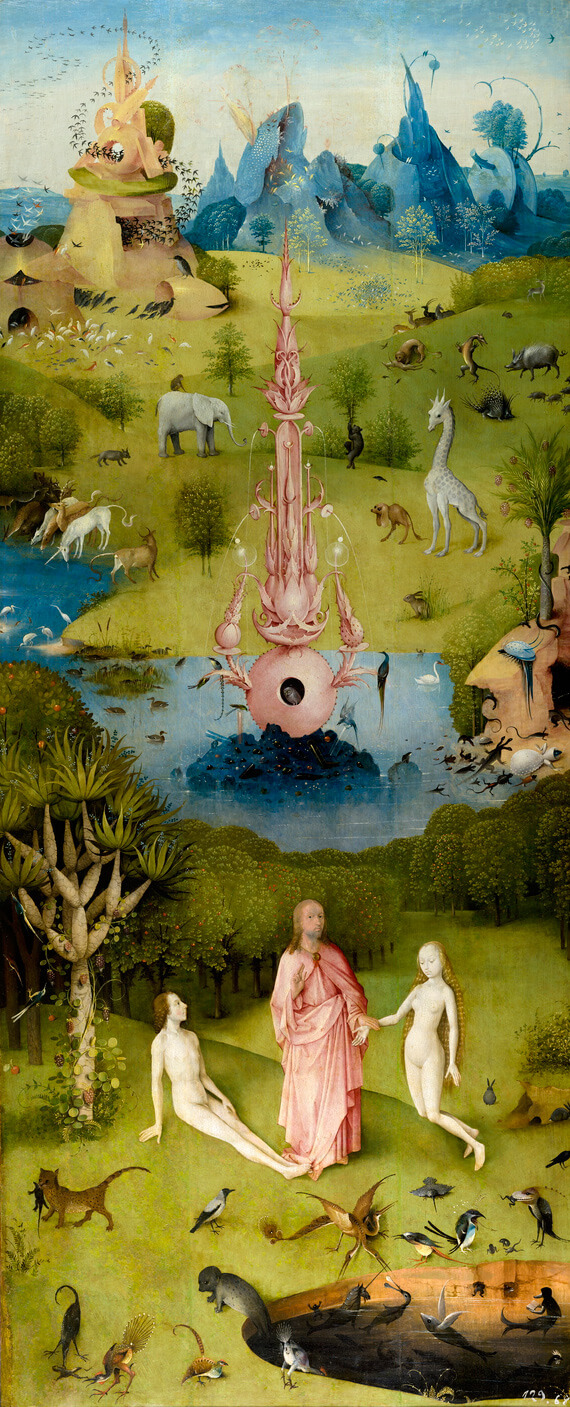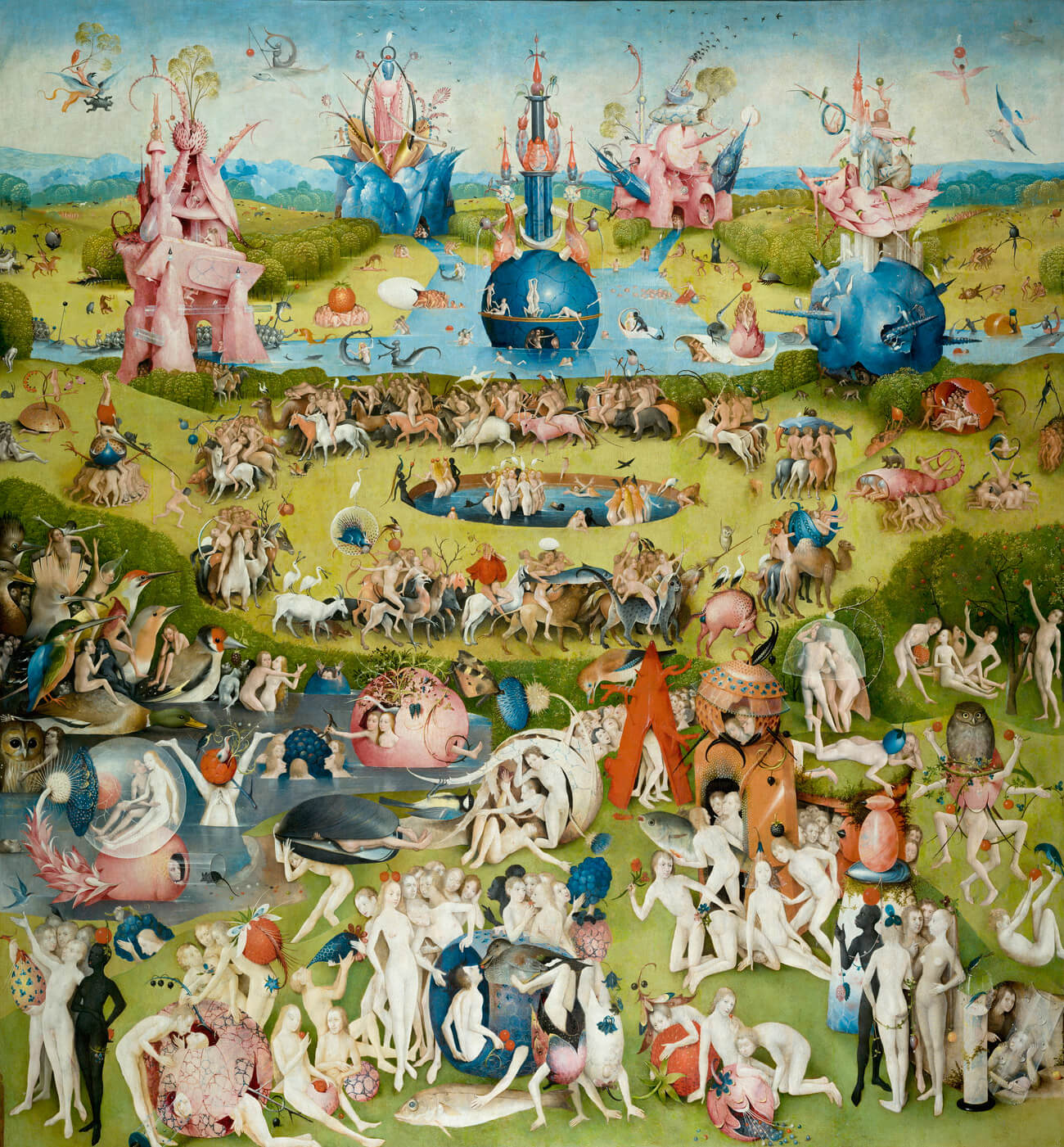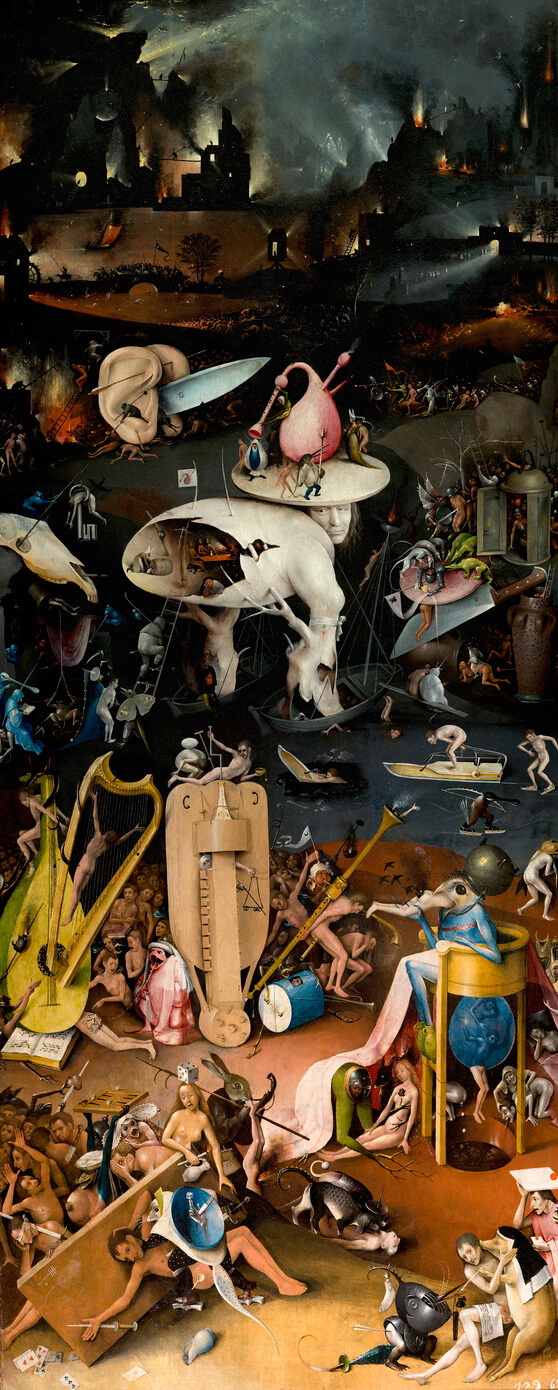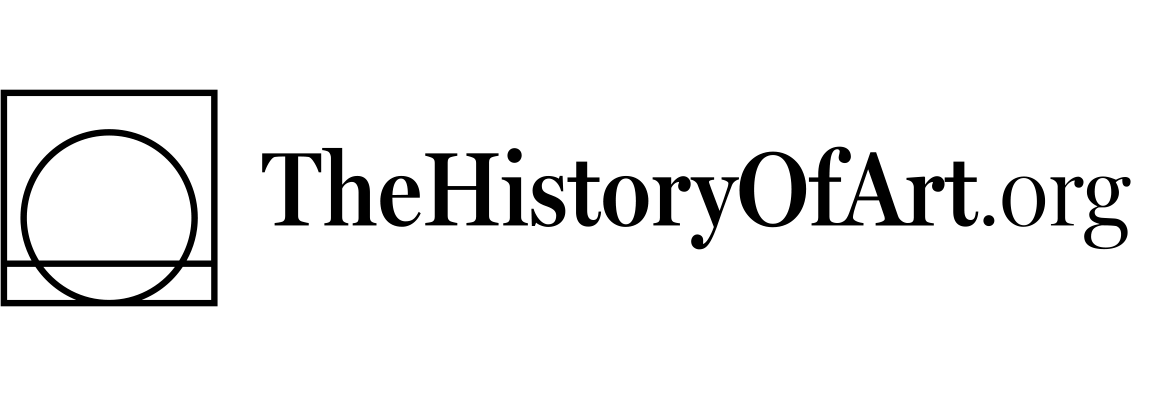The Garden of Earthly Delights Triptych by Hieronymus Bosch, circa 1503
The Garden of Earthly Delights is believed to have been a gift for the wedding of Henry III of Nassau-Breda and artist Bosch intended it to be both a guide to the positives of marriages as well as something to simply entertain the eye.
The sections capture elements of the Bible, with four stories played out, covering Creation of the World up to the Third Day, Paradise and the Creation of Eve, Humankind before the Flood and Hell. Both sides of the hinged doors are painted, thus offering space for four paintings in total, with a maximum of three on display at any one time.
The triptych is known to have been on display at the Brussels palace of the Nassau family, and from this we have been able to estimate it's creation at around 1503 based on the best available evidence. Themes such as the Creation of Adam or Eve have been incorporated into the work of many artists around this time.
The earliest art critics to see this work struggled to describe it accurately, because of the fantastical nature of it's content. Whilst being full of praise for the final piece, they would explain to other European art followers that it could only really be understood by those who saw it with their own eyes.
This particular painting was set up alongside some mythological paintings from the likes of Jan Gossaert and Lucas Cranach, with a moral basis being common across all the art work in this area of the Brussels palace.
Another notable member of the Northern Renaissance, Albrecht Durer is also known to have visited the palace in 1520 and been particularly impressed by the work of Bosch. There are also similarities between the work of Bosch and Pieter Bruegel the Elder, such as in his famous Hunters in the Snow painting.
The majority of triptychs from this period tend to be chronological from left to right, once the hinged doors have been opened. It is likely that this is the case with The Garden of Earthly Delights, too. From left to right, you would view God presenting Eve to Adam, with a free, liberated view of paradise in the centre, with the right hand side offering the frightening consequences of damnation.
Creation of the World up to the Third Day
The painting which adorns the outer sides of the triptych appears to be the Creation of the World up to the Third Day, where plant life had been added but before the arrival of animals and humans.
The purpose of this painting is to set the scene prior to the influence of humanity, and the negative consequences that arise because of it.
The artist creates a sense of suspense and excitement before these shutter doors are opened to reveal the rest of the artwork.
Bosch placed God into this scene, sat in the top left as a small human figure. The Latin inscription beside him reads, "...Ipse Dixit et facta sunt. Ipse mandavit et creata sunt..." which translates as, "...He said it and it was made. He ordered it and everything was created..."
Creation is deliberately somber and subtle in order to maximise the impact upon opening the artwork, revealing an extravagance of colour and detail to announce the chronological interior.
As found in Genesis 1:2, "...The earth was formless and void, and darkness was over the surface of the deep, and the Spirit of God was moving over the surface of the waters..."

Paradise and the Creation of Eve

Humankind before the Flood
This artwork aims to underline the behaviour of mankind prior to the Flood. Essentially, the punishments found in the Hell panel were for glutinous behaviour that brought upon the flood.
You will find that this panel displays the extravagances of life with intertwined humans and lude behaviour. Bosch would likely be advising us on the merits of marital life, leaving behind some of this immoral behaviour.
Some historians are not convinced by this explanation of Bosch's panels and do not believe that the middle scene contains any ludeness at all. It is this central panel which remains the controversial element of this artwork.
A more careful study of the painting reveal some interesting details, such as a cat eating a mouse, several dark creatures lurking threateningly and also voyeuristic creatures looking on at events.
Moral themes can be found in famous paintings all the way up to the present day. Picasso, for example, in the 20th century would display the horrors of war in several artworks which highlighted the bombing of Guernica.
Despite the strong moral tale found in this large scale painting there is still much to enjoy from a purely aesthetic point of view. The Humankind before the Flood panel features a bright landscape artwork with mythical creatures with raucous humans.
The colour scheme found in this panel also contrasts against the darkness of hell, which awaits these direction-less immoral characters.

Hell
The sprawling darkness captures the punishment of man for their over exhuberance in the earlier panels of this work.
Hell has always retained a powerful symbolic hold over the moral compass of many religions and societies. The fear of punishment in a future life helped serve to keep those in the present day in line.
The preceding panel in this series, Humankind before the Flood, and the content found within it directly cause the pain and suffering found within Hell.
This symbolic theme also featured in the work of Pieter Bruegel the Elder, with The Triumph of Death, as well as Peter Paul Rubens, William Adolphe Bouguereau and Michelangelo.
There are many elements here which remind us of the latter's Last Judgement mural. The detail and activity is also close to Bruegel the Elder's signature style.
Punishment and pain is depicted with butchered bodies plus fears of terror in the eyes of others strewn around the scene. The familiar fire and smoke contrast against darkness to provide a typical sense of this biblical setting.




